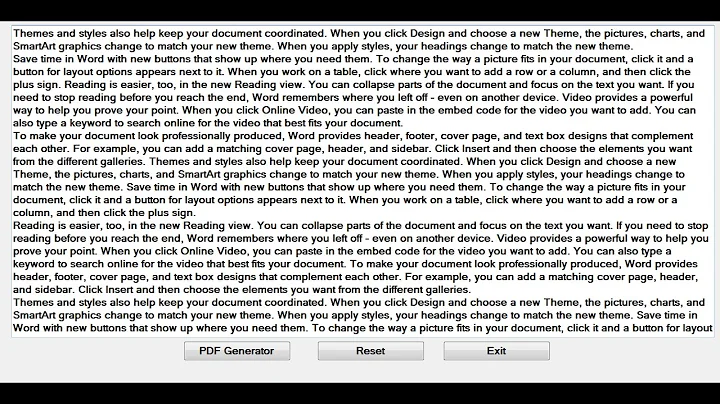Master the Art of Notecard Writing: Overview
Table of Contents:
- Introduction
- The Zettelkasten Method and Its Influence
- The Importance of Expressing in Your Own Words
- Step 1: Express what you have learned in your own words
4.1 The Original Intention of the Zettelkasten Method
4.2 Importance of Outputting Your Own Thoughts
4.3 Creating Reusable Materials
- Step 2: Take Flash Notes
5.1 Importance of Flash Notes
5.2 Suitable Tools for Flash Notes
- Step 3: Take Card Notes
6.1 Organizing Flash Notes into Card Notes
6.2 Tools for Card Note Management
- Step 4: Create Topics
7.1 Application of Card Notes
7.2 Creating Topics and Outputting into Articles
- Step 5: Seek Feedback
8.1 Testing the Effectiveness of Knowledge
8.2 Recording Experiences and Achieving a Learning Loop
- Conclusion
The Card Note-taking and Writing Method: Taking Card Notes
Card notes are the polished and permanently saved versions of flash notes, acting as a storage room for your thoughts and a generator of inspiration. In this section, we will explore the process of taking card notes and the tools that can be used to manage them effectively.
The Zettelkasten method, which has greatly influenced my own note-taking and writing workflow, emphasizes the importance of expressing your own thoughts and creating reusable materials. This method enables you to organize your output in a smarter way, reducing the workload and improving creative efficiency.
Step 1 of the Card Note-taking and Writing Method involves expressing what you have learned in your own words. This step aligns with the core principle of the Zettelkasten method and the Feynman Learning Method, which both emphasize the improvement of expression skills and the verification of understanding through output. It is crucial to understand that the focus of this method is not simply on note-taking, but on generating your own content.
Taking flash notes is an integral part of the process. These notes are quick jottings of your fleeting inspirations and serve as writing drafts. Finding a convenient tool for flash notes is essential, such as a small paper notebook, mobile phone memo, or voice recorder. The key characteristic of flash notes is speed, enabling you to capture ideas as they arise.
Once you have your flash notes, it's time to organize them into card notes. This is where the real essence of the Card Note-taking and Writing Method comes into play. Utilizing a bi-directional links note-taking tool is highly recommended for effective card note management. These tools offer features such as bi-directional links, fine card granularity, and support for exporting or local storage. Examples of such tools include Roam Research and Logseq.
Creating topics is the next step in the method, allowing you to gather your card notes and output them into articles or other forms of content. Learning how to create topics that effectively organize your thoughts is crucial for a seamless writing process.
Finally, seeking feedback is an important part of internalizing knowledge and improving your writing skills. By putting your knowledge into practice and recording your experiences, you can achieve a closed learning loop that enhances your understanding and creativity.
In conclusion, the Card Note-taking and Writing Method offers a systematic approach to capturing, organizing, and utilizing your knowledge effectively. By following the steps outlined in this article, you can enhance your learning, accumulate knowledge, and improve your creative efficiency.
Highlights:
- The Zettelkasten method greatly influences the Card Note-taking and Writing Method.
- Expressing in your own words is crucial for understanding and creativity.
- Taking flash notes allows for capturing ideas quickly.
- Card notes are polished versions of flash notes, serving as a storage room for thoughts.
- Bi-directional links note-taking tools are recommended for effective card note management.
- Creating topics helps organize card notes for easy output into articles or other content.
- Seeking feedback enhances internalizing knowledge and improving writing skills.
FAQ:
Q: Can the Card Note-taking and Writing Method be used for purposes other than blogging?
A: Yes, the method is applicable to anyone looking to learn, accumulate knowledge, and improve their own knowledge management.
Q: Is it necessary to use flash notes in the method?
A: Flash notes are optional but can be useful for capturing fleeting inspirations and as writing drafts.
Q: What tools are suitable for flash notes?
A: Any convenient tool for opening and writing, such as a small paper notebook, mobile phone memo, or voice recorder, can be used.
Q: Which note-taking tools are recommended for card note management?
A: Tools that offer bi-directional links, fine card granularity, and support for exporting or local storage, such as Roam Research and Logseq, are suitable choices.
Q: How can the Card Note-taking and Writing Method improve creative efficiency?
A: By organizing thoughts in reusable card notes and continuously practicing and recording experiences, a closed learning loop is achieved, leading to improved creative efficiency.
 WHY YOU SHOULD CHOOSE SaasVideoReviews
WHY YOU SHOULD CHOOSE SaasVideoReviews







